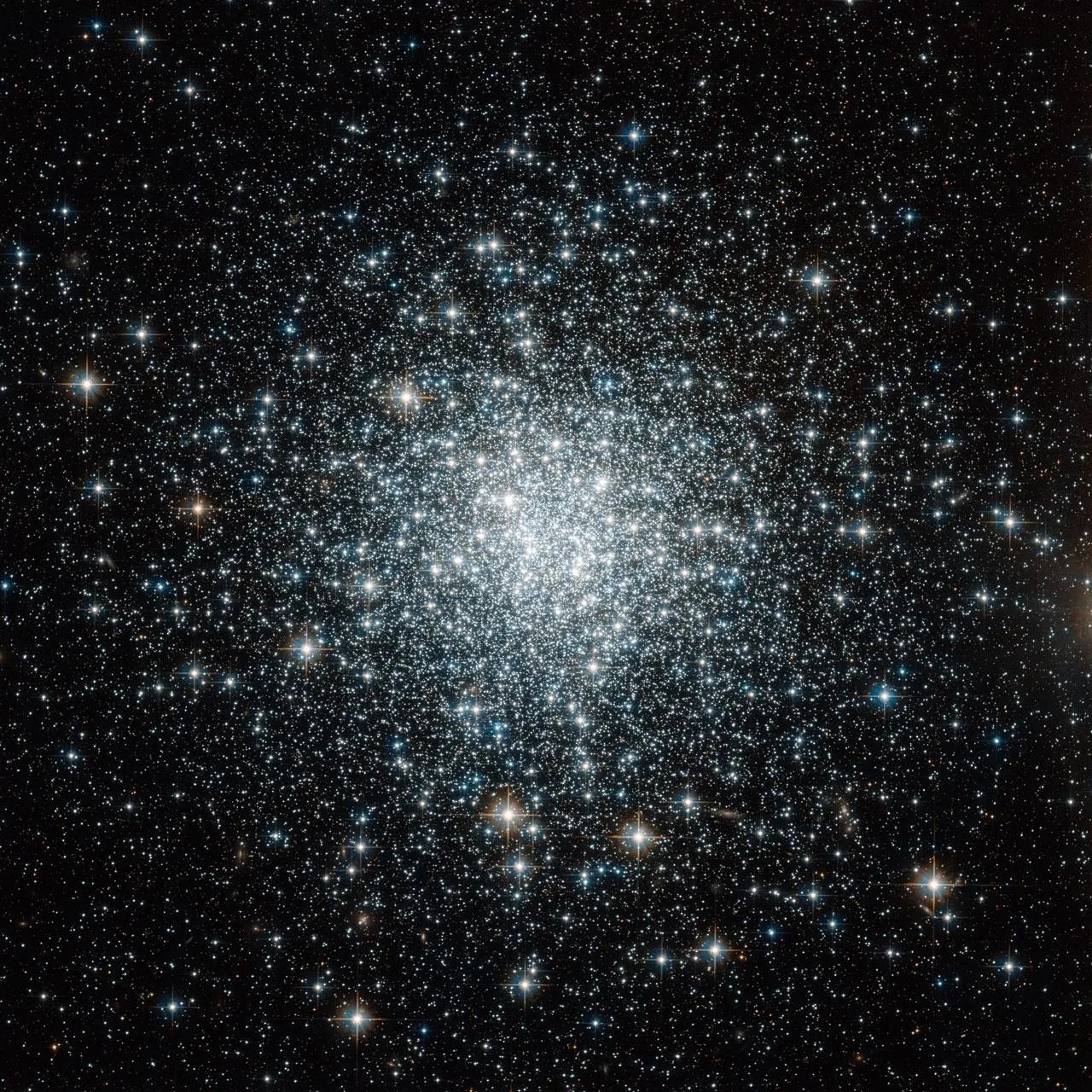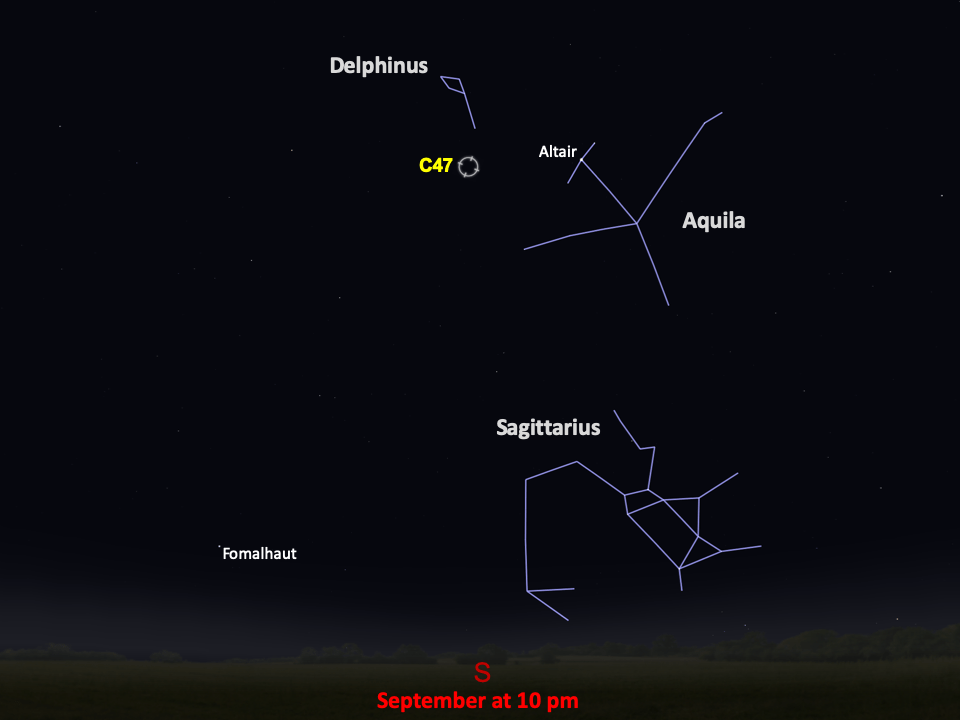Caldwell 47
Hubble helped provide clues to the origin of young, hot, blue stars in Caldwell 47.
Distance
50,000 light-years
Apparent Magnitude
8.8
constellation
Delphinus
object type
Globular Cluster

This Hubble image of Caldwell 47 shows a gleaming globular cluster in all of its glory. Star clusters like this one encircle our galaxy like bees buzzing around a hive. Sparsely packed open clusters are often strewn throughout the disk of the galaxy — a relatively flat area that includes most of the galaxy’s contents, including the spiral arms. Globular clusters, however, are typically found in the galaxy’s halo — a diffuse, spherical area that surrounds the heart of the galaxy.
Caldwell 47 is about 50,000 light-years away from Earth, but the combined light of its many thousands of stars calls our attention from halfway across the galaxy. Hubble's Advanced Camera for Surveys imaged the cluster here in visible and infrared light, which combines the type of light that we can see (visible) with a kind that can peer through clouds of dust (infrared). Hubble’s observations presented astronomers the opportunity to study some of Caldwell 47’s strangest stellar members — blue stragglers.
Blue straggler stars are so named because they seem to lag behind in the aging process, appearing younger than the rest of the stars they formed with. Astronomers think that blue stragglers might emerge from binary systems — pairs of stars that orbit each other. One possible scenario is when the more massive star of the pair evolves and expands, the smaller star steals material away from its companion. This stirs up hydrogen fuel and causes the growing star to undergo nuclear fusion at a faster rate. It burns hotter and bluer, like a massive young star.
Caldwell 47 was first spied by British astronomer William Herschel in 1785, though he originally thought it was a nebula. Also cataloged as NGC 6934, it is found in the Delphinus constellation and is best viewed in summer night skies in the Northern Hemisphere, or winter skies in the Southern Hemisphere. With a magnitude of 8.8, the cluster can be seen in binoculars, but it will likely appear to be a single star. Through a moderate or large telescope, individual stars can be picked out at the edges of the cluster, with the central region remaining an unresolved haze of stars.
For more information about Hubble’s observations of Caldwell 47, see:
A Distant Backwater of the Milky Way

Glossary
Blue Straggler - A blue star in a star cluster that appears to be far younger than its neighbors, likely resulting from collisions between stars or by other stellar interactions.
Galactic Halo - A roughly spherical collection of old stars and globular clusters surrounding a spiral galaxy.
Globular Cluster - A spherical group of stars that are gravitationally bound to each other, with most of the stars concentrated at the cluster’s center.
Magnitude - The brightness of an astronomical object, represented by a number; bright objects have low numbers on the magnitude scale, while dim objects have high numbers.
Nebula - An interstellar cloud of dust and gas; either a location where new stars are being forged or a cloud of material ejected into space by a dying star.
Open Cluster - A group of stars loosely bound by gravity, destined to be short lived because the gravitational interactions between members are weak enough that stars can be drawn away from the cluster by stronger gravitational forces.
Explore Hubble's Caldwell Catalog
The following pages contain some of Hubble’s best images of Caldwell objects.

Caldwell 1
Also known as NGC 188, this group of stars formed from a large cloud of gas making the stars roughly…

Caldwell 2
This shell of gas is expanding outward, away from the dying star within.

Caldwell 3
This barred spiral galaxy was first spotted by British astronomer William Herschel in April 1793 in the constellation Draco.




